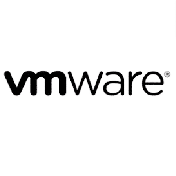Seminarinhalt
Programm
- Introduction to Power Automate for desktop
- Console overview
- Flow designer overview
- Create a simple flow
- Introduction to Power Automate for desktop development
- Create a flow in the flow designer
- Create conditionals and loops
- Using subflows
- Test and debug flows
- Manage UI elements and images
- Deploy exception handling
- Check your knowledge
- Set up the environment
- Explore Power Automate for desktop
- Create your first Power Automate for desktop flow
- Record Power Automate for desktop actions
- Edit and test recorded actions
- Introduction1 min
- Set up in Power Automate
- Define an input variable
- Set input variables
- Define output variables
- Add UI elements and test
- Check your knowledge
- Introduction
- Setup process in Power Automate
- Build a cloud flow that's triggered in Outlook
- Test your new flow
- Check your knowledge
- Setup in Power Automate for desktop
- Create a new cloud flow
- Connect your cloud and desktop flows
- Test your new connection
- Solution setup in Power Automate
- Create a form processing flow
- Add fields and collections of documents
- Analyze and train a model
- Integrate the model into a cloud flow
- Work from an existing solution in Power Automate
- Create an approval solution
- Integrate with an existing desktop flow
- Build communication with Outlook
- Test and run a flow
- Set up an unattended desktop flow
- Create a new cloud flow that calls an existing flow in unattended mode
- Perform a test run
- Best practices
- Check your knowledge
- Get familiar with process advisor
- Create your first recording
- Edit recordings and group actions
- Analyze recordings and interpret results
- Automation recommendations
- Create, edit, and use variables
- Variable data types
- Advanced data types
- Input and output variables
- Variable manipulation
- Sensitive variables
- Introduction to loops
- Loop actions
- Simple loop actions
- For each loop actions
- Loop condition actions
- Introduction to conditional actions
- Conditional actions
- The If group of actions
- Exercise - If group of actions
- The Switch group of actions
- Introduction
- Flow control actions
- Check your knowledge
- Introduction to the Power Automate for desktop recorder
- Create desktop flows using the recorder
- Introduction
- About exceptions
- Exception handling
- Introduction
- Folder actions
- File actions
- Introducing web automation
- Launch, close, and handle browsers
- Handle web pages and forms
- Extract data from web pages
- Direct web access and scripting
- Introduction
- UI elements
- Window handling and element interaction
- Introduction
- Launch, save, and close an Excel file
- Read from an Excel document
- Write to an Excel worksheet
- Additional actions and features
- Manage worksheets
- Introducing email automation
- Automate webmail services
- Automate Outlook
- Automate Exchange servers
- Introduction
- System and workstation actions
- Services actions
- Introduction to message boxes
- Message box actions
- Introduction
- Text handling actions
- Date time actions
- Mouse and keyboard actions
- Introduction to running Power Automate desktop flows from cloud flows
- Run a Power Automate desktop flow from a cloud flow
- Database actions
- Introduction
- Active Directory actions
- Introduction
- Scripting actions
- Introducing OCR technologies
- OCR actions
- Introduction
- Demo of the maker portal experience
- Explore custom connector configuration options
- Exercise - Create a new connector in a solution
- Use a custom connector
- Introduction
- Authentication options
- Use APIs with Azure AD
- Configure Azure Active Directory authentication
- Exercise - Use graph API from a custom connector
- Share and move between environments
- Identify Microsoft Power Platform environments
- Data Loss Prevention policies
- Microsoft Power Platform Center of Excellence Starter Kit
Zielgruppen
Vorkenntnisse
Trainings zur Vorbereitung
Wichtige Information
Um während des Trainings an den Übungen teilnehmen zu können, ist eine Multi-Faktor-Authentifizierung (MFA) erforderlich. Dafür benötigen Sie ein Mobiltelefon und eine Authentifizierungs-App. Wir empfehlen die kostenlose Microsoft Mobile Phone Authenticator App.
Download Microsoft Mobile Phone Authenticator App.
Set up your Microsoft 365 sign-in for multi-factor authentication.



